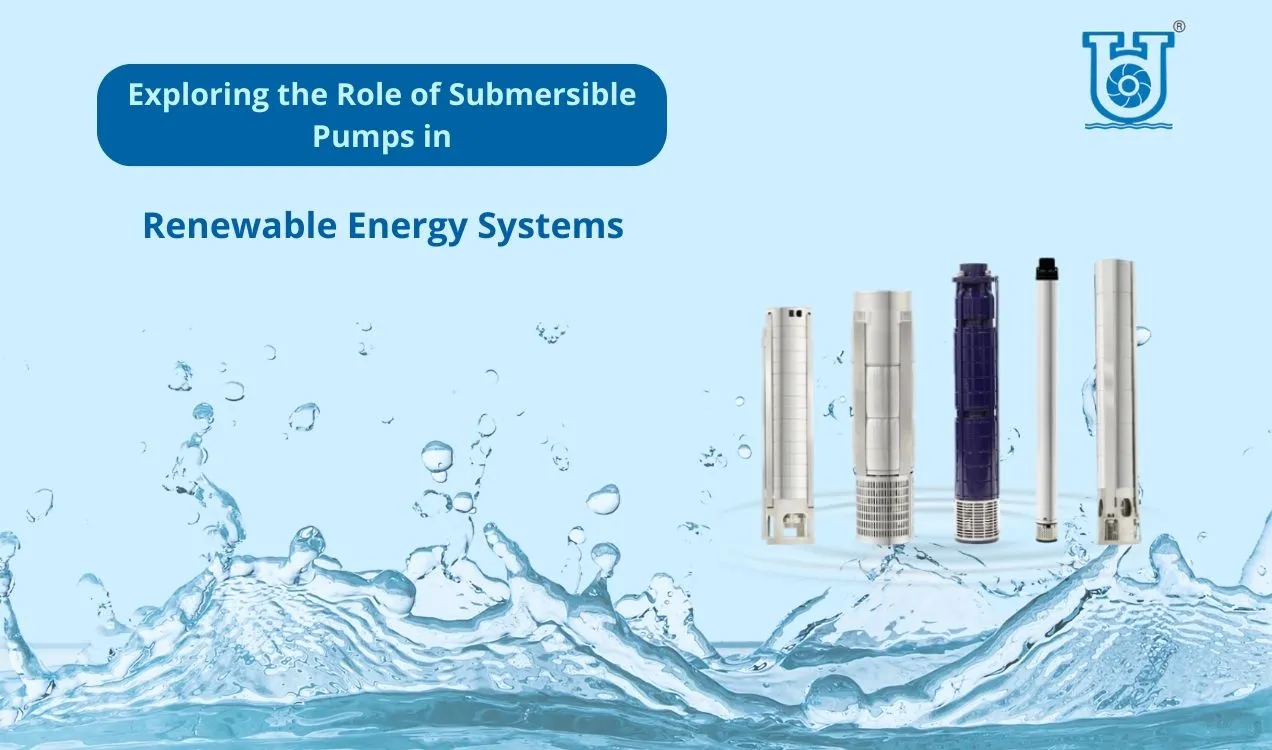As global society moves towards sustainable energy solutions, submersible pumps play an increasingly important role in renewable energy systems. These pumps are crucial for the effective and reliable distribution of renewable energy supplies. This blog explores the vital roles submersible pumps perform in various renewable energy sectors and highlights their significance in the global effort to create a better future.
Generating Hydroelectric Power
Hydroelectric power, a cornerstone of renewable energy, uses the kinetic energy of flowing water to generate electricity. Submersible pumps are essential in regulating water flow through turbines to ensure steady power production.
Role in Hydroelectric Systems
Water submerges submersible pumps in hydroelectric power facilities, which control water intake, outflow, and turbine operation. Because of their underwater building design, which can survive the severe weather and high pressures present in these settings, they can run constantly. For the effective transformation of kinetic energy to electrical energy, these pumps support reservoir water level regulation and turbine performance control.
Attributes in Hydroelectric Applications
Submersible pumps offer several advantages within hydroelectric systems:
- Reliable Power Generation: Submersible pumps allow for the generation of energy continuously even at different water levels by sustaining a constant water flow.
- Increased Efficiency: These pumps reduce energy loss so that a larger percentage of the kinetic energy in water is transformed into power.
- Less Environmental Impact: By promoting environmentally friendly water management techniques, submersible pumps help hydroelectric facilities leave as little of an ecological imprint.
Production of Geothermal Energy
Geothermal energy, derived from the Earth’s internal heat, is another important renewable energy source that relies on submersible pumps. These pumps are crucial for extracting hot water or steam from deep underground reservoirs to generate electricity or for direct heating and cooling applications.
Role in Geothermal Systems
Deep beneath wells in geothermal power facilities, submersible pumps are used to move steam or hot water to the surface. Because of their engineering to handle high temperatures and pressures, these pumps can operate reliably under the challenging circumstances of geothermal energy extraction.
Advantages in Applications with Geothermal Energy
Within geothermal energy systems, submersible pumps provide a number of benefits:
- High Temperature and Pressure Resilience: The high temperature and high-pressure conditions that are characteristic of geothermal reservoirs are well tolerated by submersible pumps’ robust architecture.
- Efficient Energy Transfer: These pumps contribute to the most energy derived from geothermal sources by effectively transporting geothermal fluids.
- Long-Term Trustworthiness: Longer operating life guaranteed by submersible pumps lowers maintenance expenses and interruptions.
Generating Biofuel
Submersible pumps are essential to several intricate procedures used in the manufacturing of biofuels, including ethanol and biodiesel. The raw materials-corn, sugarcane, and vegetable oils that are transformed into biofuels are moved and processed by these pumps.
Role in Biofuel Systems
Submersible pumps are used in biofuel production plants to move raw materials through the processing phases and manage the finished biofuel product. For this use, their capacity to handle abrasive and viscous compounds makes them perfect.
Advantages of use in Biofuels production
The benefits of producing biofuel using submersible pumps are:
- Effective Material Handling: The manufacturing process is streamlined by the effective movement of huge amounts of raw materials by these pumps.
- Versatility: Because submersible pumps can handle a variety of materials, including liquids and slurries, they may be used at many phases of the biofuel production process.
- Durability: Their strong design guarantees they can resist the abrasive character of biofuel raw materials, which extends their service life and lowers maintenance.
Benefits of Submersible Pumps in Systems of Renewable Energy
Many benefits make submersible pumps essential components of renewable energy systems. Such benefits consist of:
- Timeliness: Whether buried far below or immersed in water, submersible pumps are designed to function consistently under demanding conditions. Since its design reduces the possibility of mechanical failure, renewable energy applications can run continuously.
- Performance: The highest possible effectiveness of these pumps is intended to lower energy consumption and the environmental effect of renewable energy systems. Submersible pumps raise the general efficiency of energy-producing systems by optimising fluid flow.
- Versatility: Applications for submersible pumps in renewable energy include anything from water treatment to the creation of hydroelectric power. Their flexibility is a great advantage in the field of renewable energy.
- Lifespan: High pressures, low temperatures, and abrasive materials are among the severe environments that submersible pumps are built to endure. Their robustness guarantees constant operation and eliminates the need for routine repair or replacement.
Conclusion
Submersible pumps play a crucial role in the effective and reliable production, extraction, and processing of renewable energy resources. As the world moves towards a more sustainable future, the significance of submersible pumps in these systems will only increase. Investing in high-quality submersible pumps and integrating them into renewable energy projects can help us achieve a cleaner, greener, and more sustainable future.
The integration of submersible pumps in renewable energy systems exemplifies the synergy between sustainability and technology, demonstrating how advanced engineering can drive the transition to environmentally friendly energy sources. As we continue to innovate and develop these technologies, the future of submersible pumps in renewable energy looks promising and bright.


